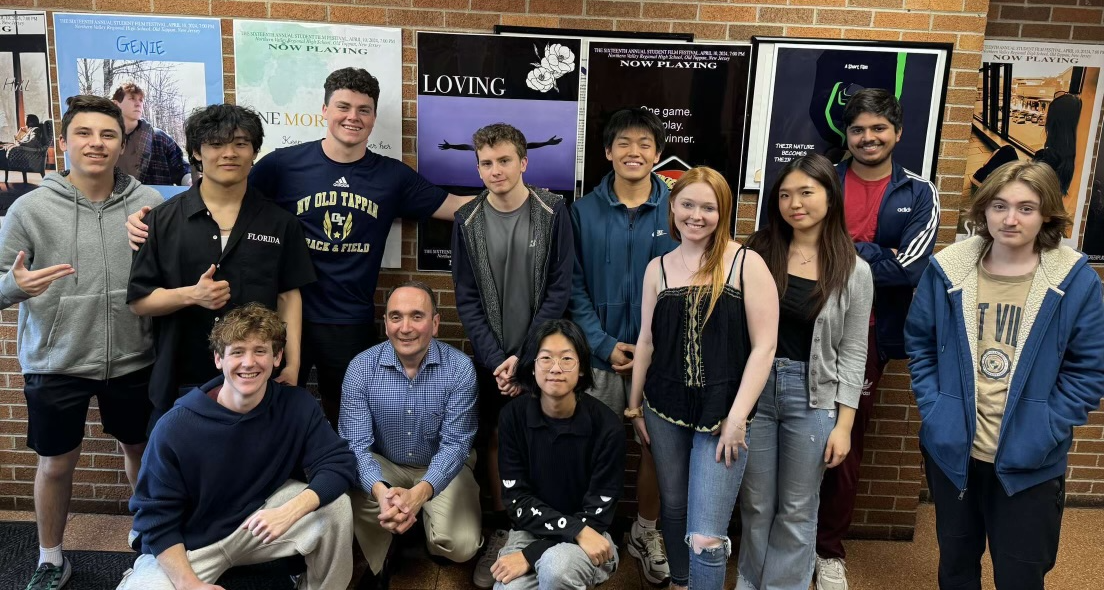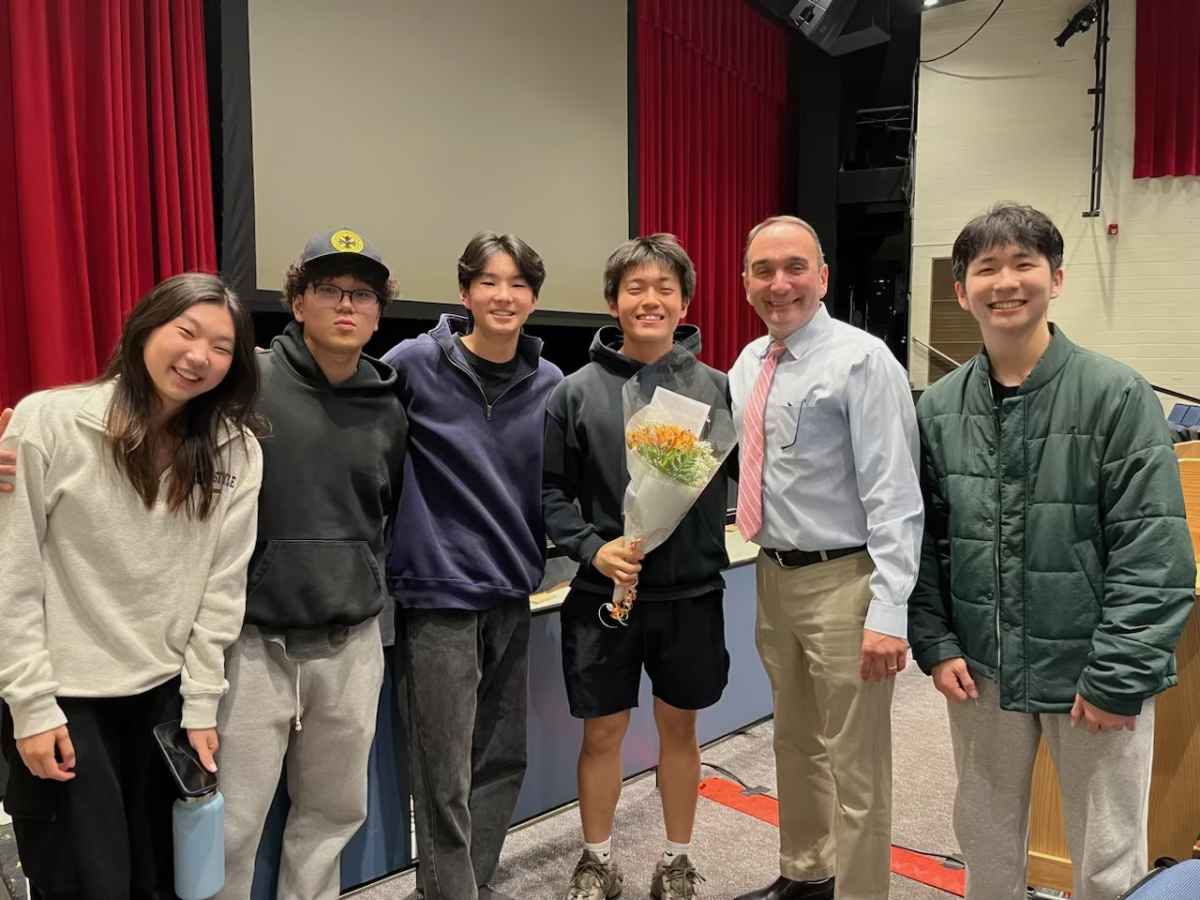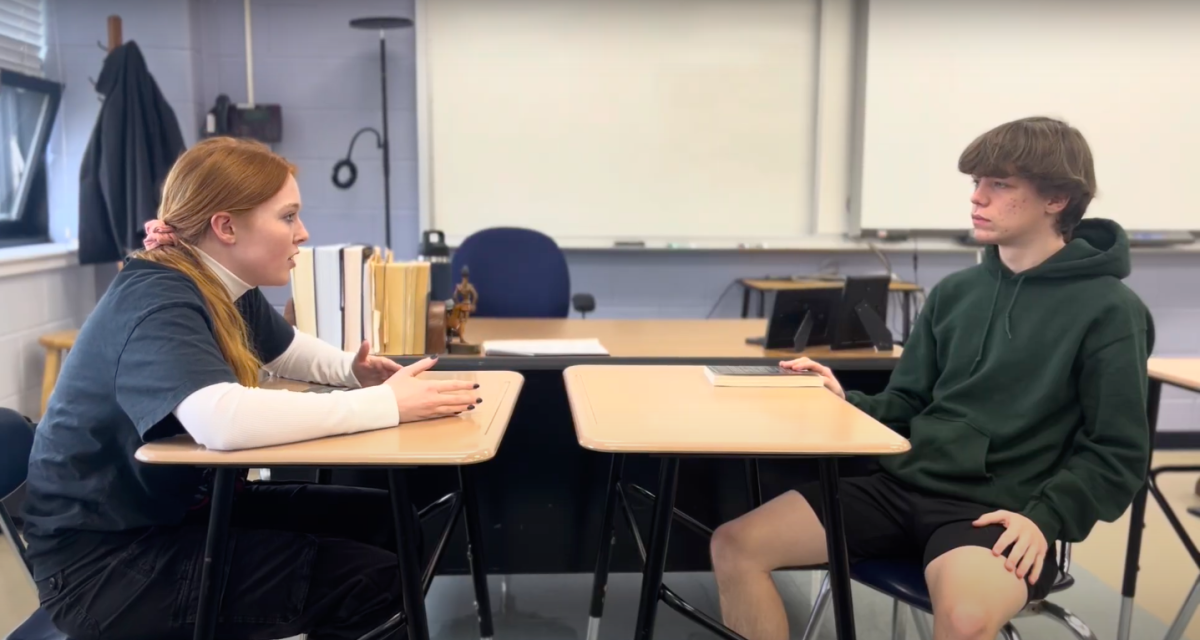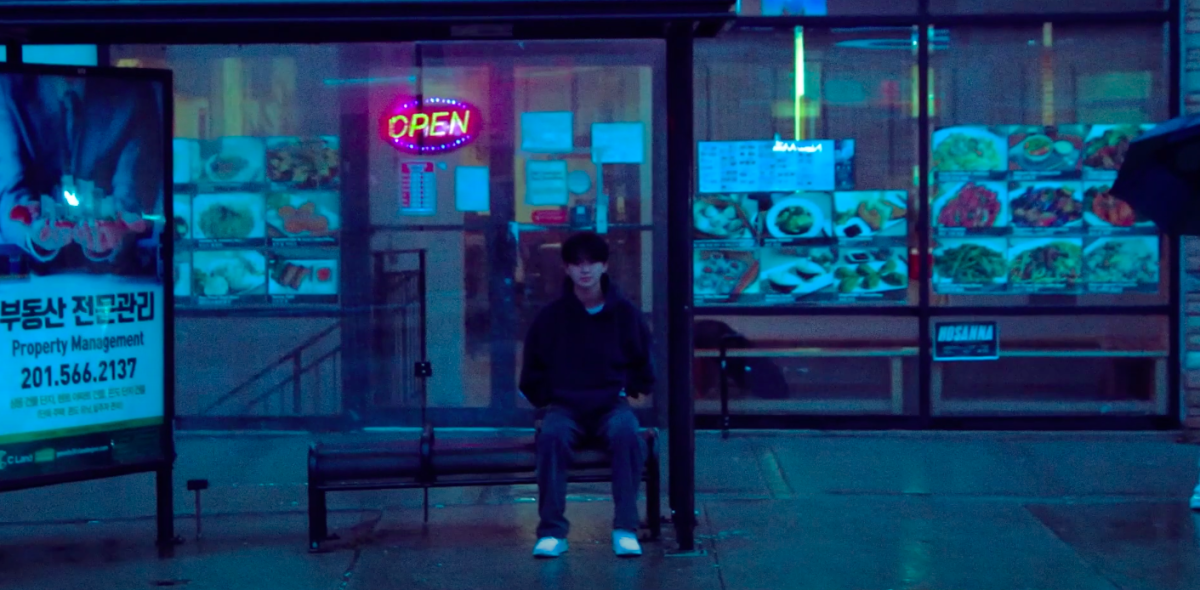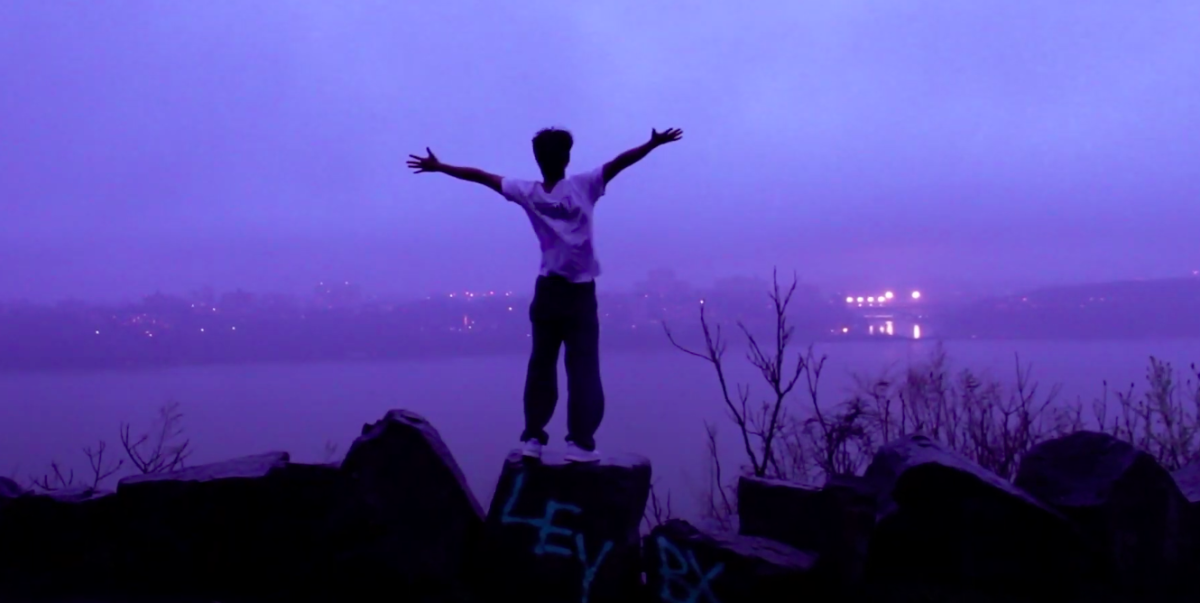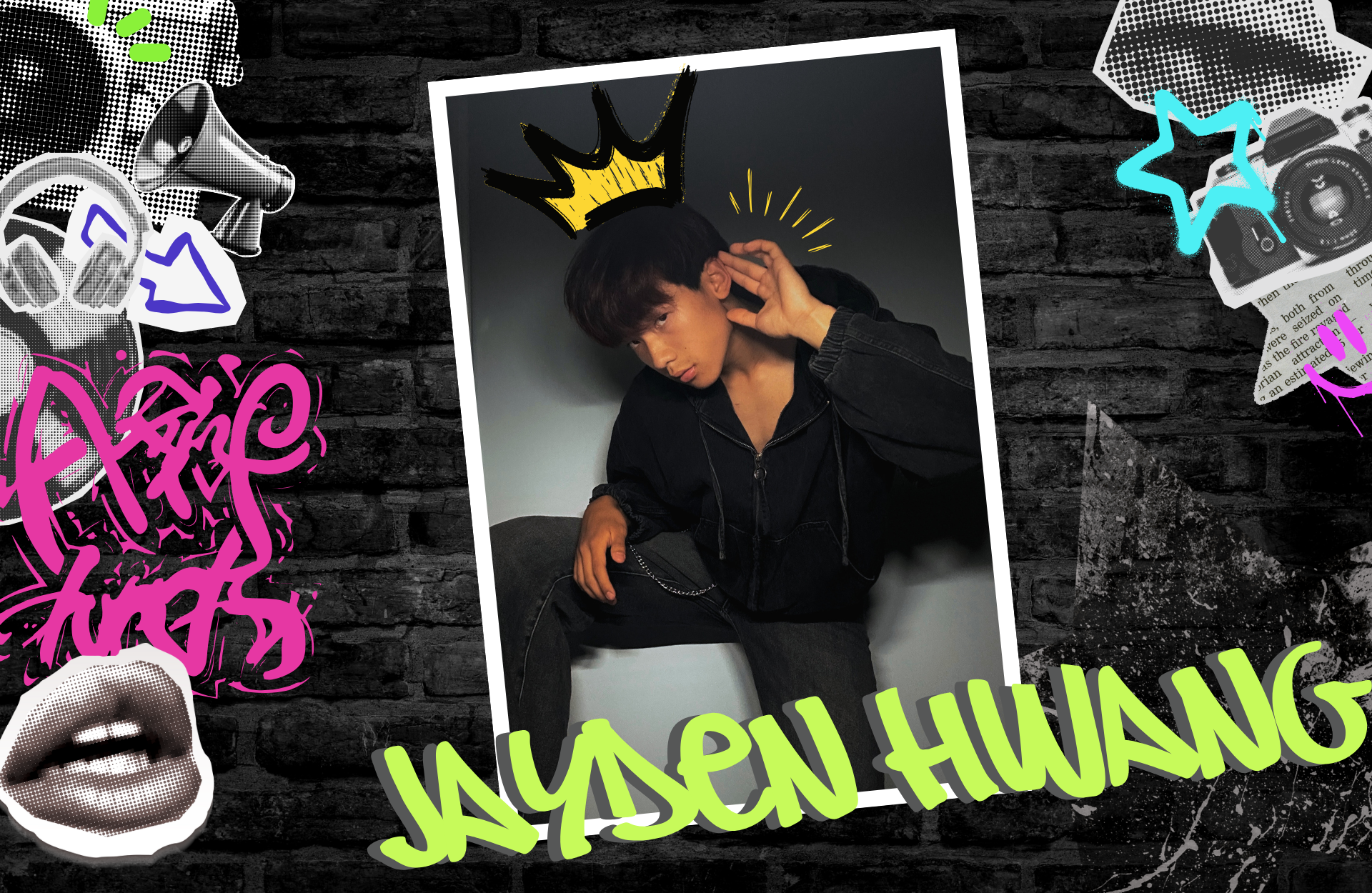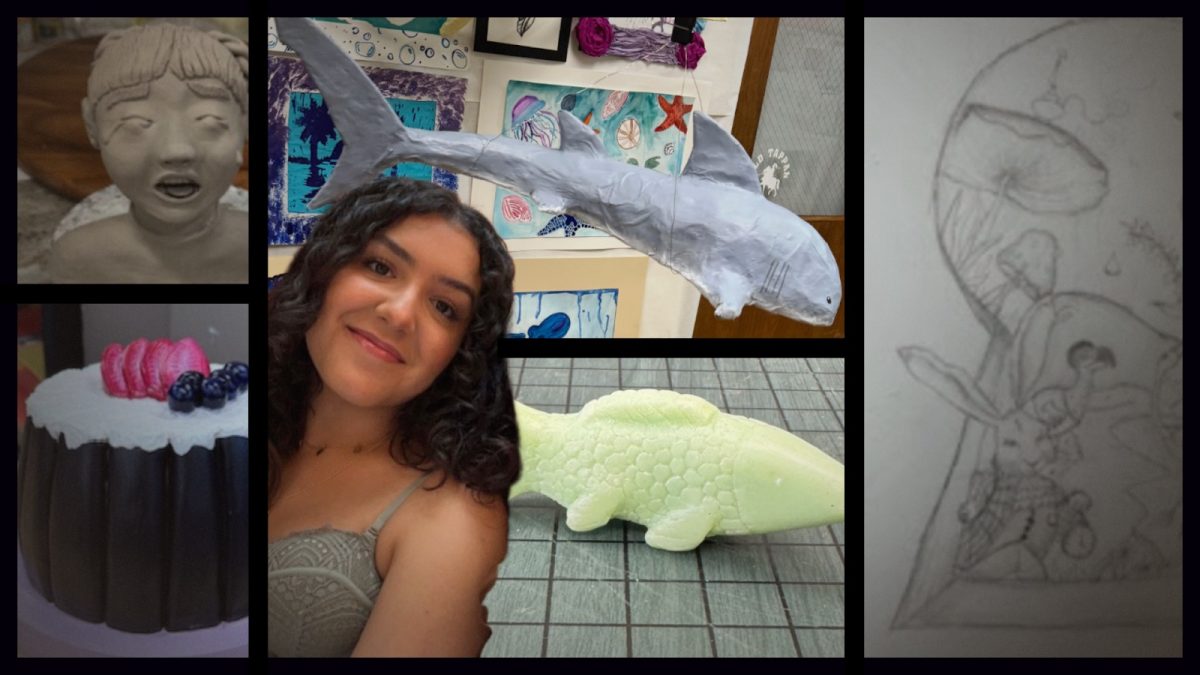Lights, Camera, Action
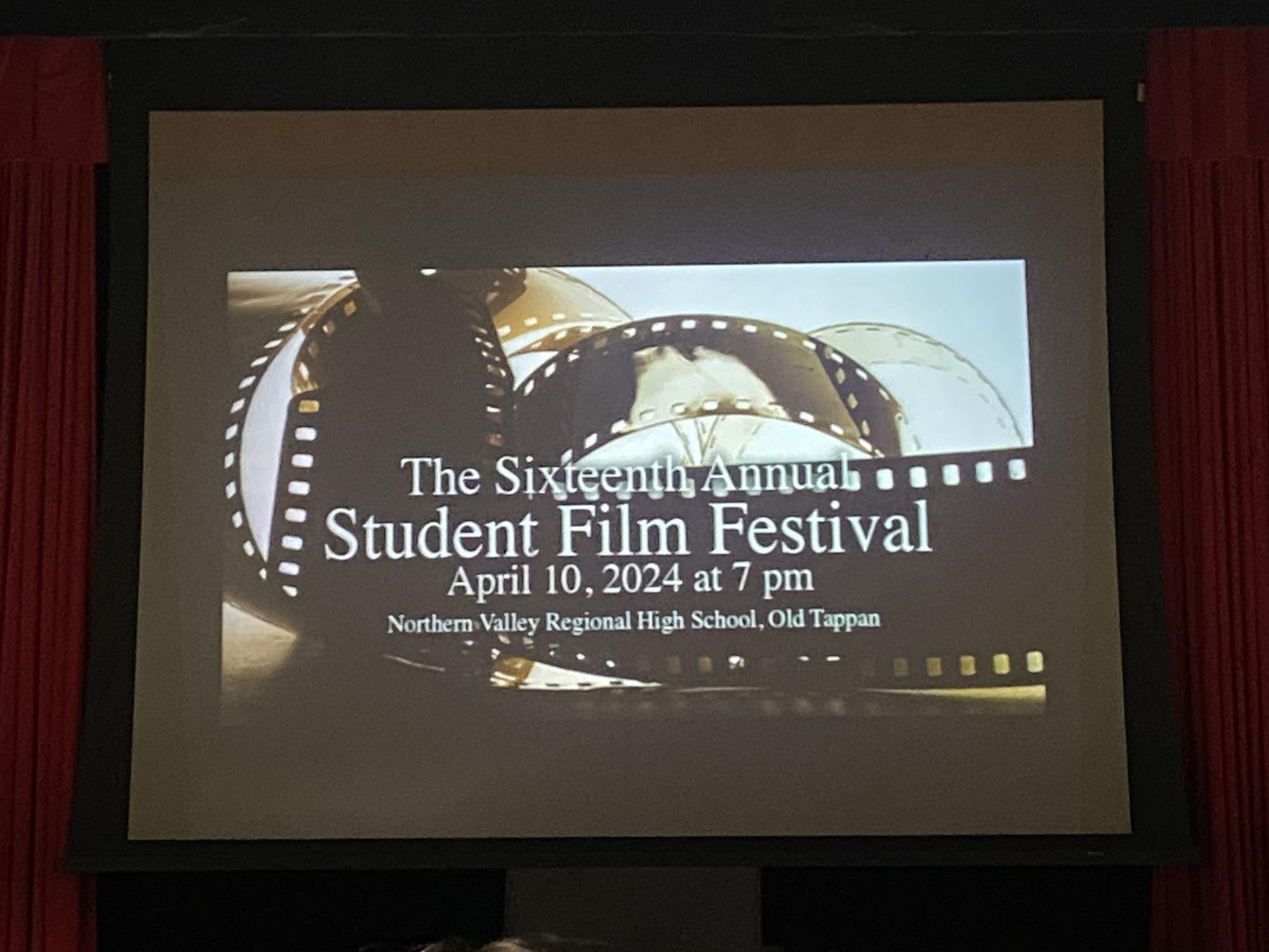
As audience members filed into the auditorium with programs in hand, 12 students from John Housley’s Film Studies class patiently waited for their work to be displayed on the big screen for the first time. Amidst the buzz of excitement, the auditorium lights dimmed and so commenced the near 90-minute journey of back-to-back student films.
The Sixteenth Annual Student Film Festival, held Wednesday, April 10, was the culmination of months of planning, writing, filming, and editing—and a return of an annual tradition after a five-year hiatus. Eleven films were screened, followed by a presentation of awards.
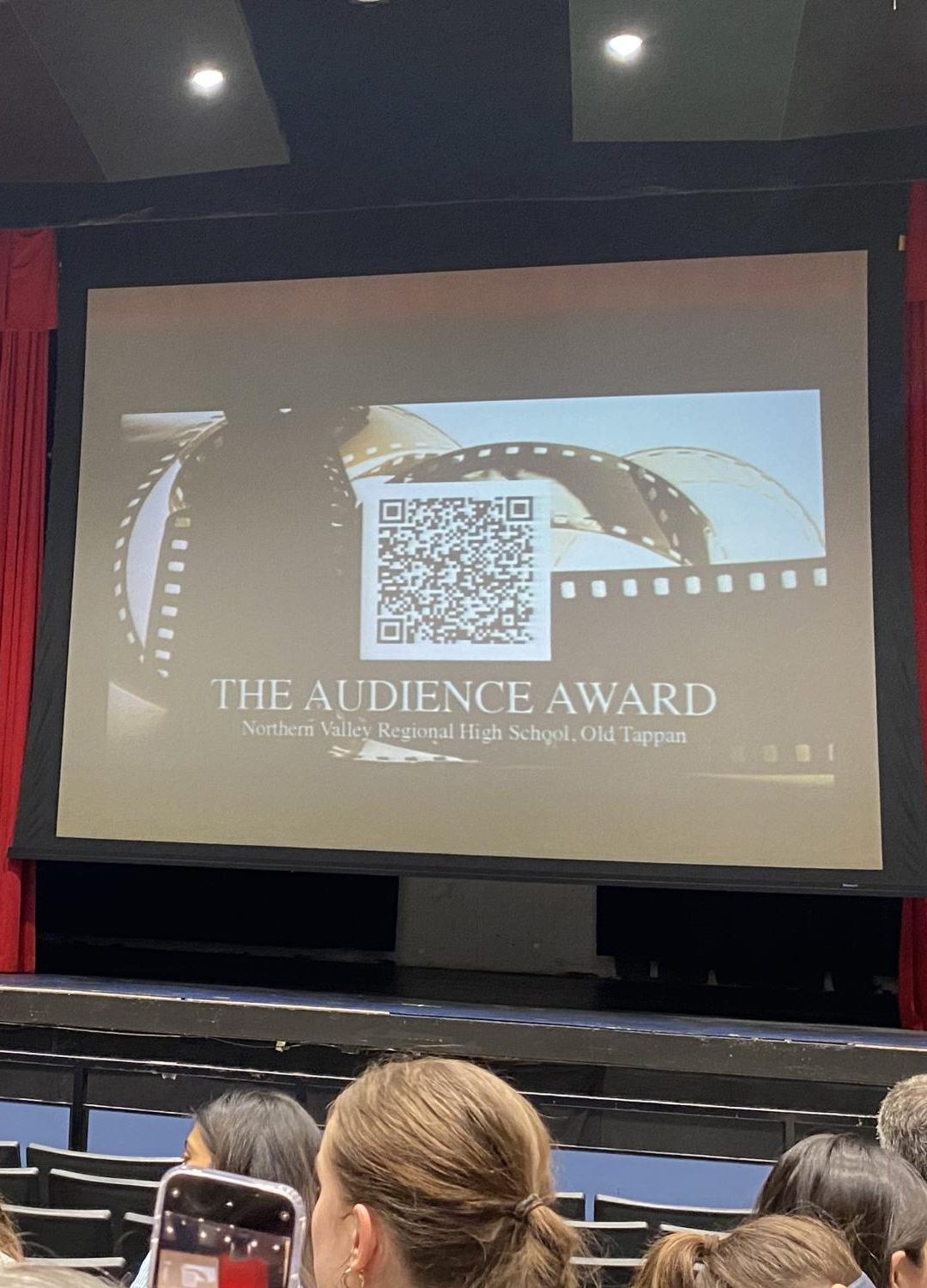
Ahead of the festival, each film was evaluated by a panel of five NVOT alumni in the film industry: Colleen Broomall, Jake Hess, Brian Lieberman, Daniel Novarro, and Jon Rudnitsky. At the end of the screening, audience members were able to vote on their pick for the Audience Award for Outstanding Achievement.
Eyes on the Hill by junior Keonho Timothy Lee and senior Roman Gatti earned Outstanding Achievement in Film Production, Outstanding Achievement in Direction, and Outstanding Achievement in Acting. Loving Rue by senior Andrew Kim earned the Audience Award for Outstanding Achievement in Film Production, Outstanding Achievement in Editing, Outstanding Achievement in Cinematography, and Outstanding Achievement in Screenwriting.
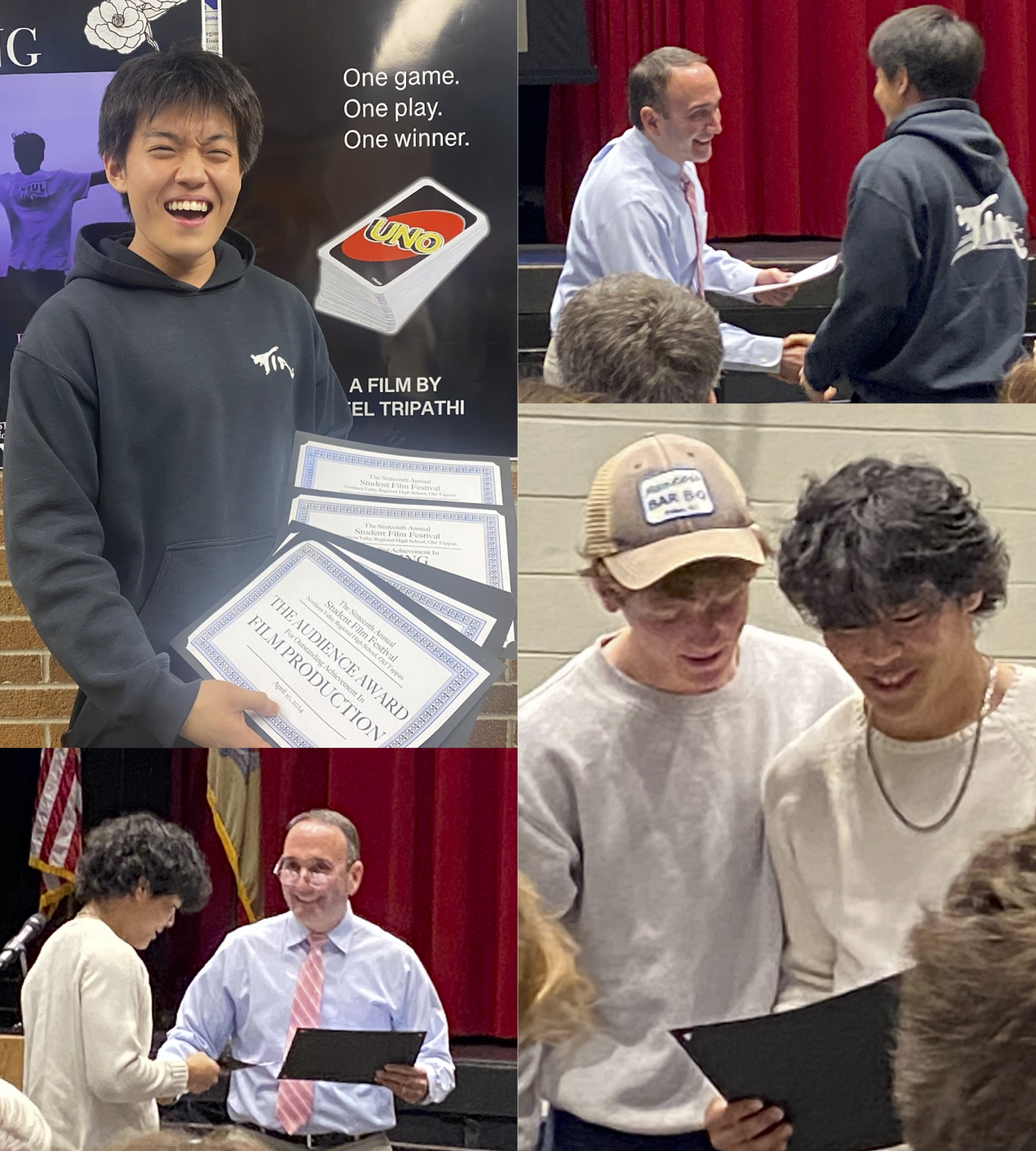
For the student filmmakers, the experience of having their films screened to a large audience brought mixed emotions.
Gatti, the experience was “surreal.” “Being able to see everyone’s faces and feeling like you were in an actual movie theater was such a cool experience, especially when the theater is full of your close friends and family,” Gatti said.
Kim described the experience as both “weird” and “touching.” “My heart was beating fast, and I didn’t know how to feel. Then, I sat back in my chair and examined the backs of the heads of all my friends and fellow classmates watching my movie and giving such attention and respect. I watched as they laughed and stayed silent in serious moments. I couldn’t help but smile.”
Ultimately, what started as a class assignment for these 12 students to complete, became an exploration of their individual passions and creativity. Housley said, “Beyond the technical accomplishments and the edits, all that stuff which is really special, at the core of it, having people take the risk and tell authentic stories, nothing makes me prouder than that.”

Title: Band Practice
Overview: A teenager distracts himself with various activities and friends before an important college admissions decision.
I wanted to make something that not only can be relatable to high school students, but something that also had a uniqueness to it. Ryan’s ability in drumming and bowling I wanted to apply into the movie to give some more story to it. The band idea of the film worked out completely as a coincidence since me, Ryan [Jensen], Travis [Kennedy], and Patrick [Yoon] have been getting together just to play random things over the past couple of months.
I wanted to showcase a short period of time, and include how much one can accomplish in such timeframe. I didn’t want to give any characters names since the focus was more on Ryan’s character and how he was processing this reality. There is also only a few scenes with dialogue as I wanted to montage the time in between major events.
Composition of shots was very essential to the important scenes. The one scene that was the best received is Ryan tuning a drum set whilst there is semi-hearable dialogue in the background about college. You can see Ryan’s distaste in the topic of conversation. Essentially I used a mix of long shots and short clips cut together to balance time passing.
I’m proud of telling a (mostly) complete story with in depth editing and design. Most of the films and videos I’ve made are really short, so something like this was unique to do. I’m proud of all of the actors and people involved helping to make this happen, and it was a pleasure sharing this idea with an audience.
Getting to this point wasn’t an easy feat. Will Poggi, director and writer of the film, Band Practice says “My movie only had 2 real conversation scenes and both I struggled with coming up with what the actors should say to expose the plot. I couldn’t really find the balance between too little or too much, which is certainly a challenge to do.” Though Poggi faced a few obstacles along the way, he essentially overcame such with experimenting and using “a mix of long shots and short clips cut together to balance time passing.” The production became a learning experience as well as bonding time for the cast and crew of 16 people. Poggi parallels themes of the film with his personal life, wanting the audience’s main takeaway to be that “Living in the moment matters infinitely more than worrying about what may happen next.”
Sadie Beavers, director and writer of the film, Standing Alone, took the opportunity to reuse a story that she previously wrote in theater class, not thinking it would have much weight to it. Beavers says, “When I saw this assignment, I wanted to revisit it as it was something that I actually really related to and I felt like that relatability would really resonate with a few people.” Beavers’ film reveals the vulnerable side of her, taking the risk and using “a topic that not many people like to talk about.” Watching it on the big screen for the first time was a much different experience but worthwhile experience for her. Beavers says she “wanted the viewers to know that aspects of life such as divorce aren’t obviously fun but they shouldn’t be hidden away, either. I also wanted people to realize that divorce not only affects people directly involved but also anyone that surrounds the family.”
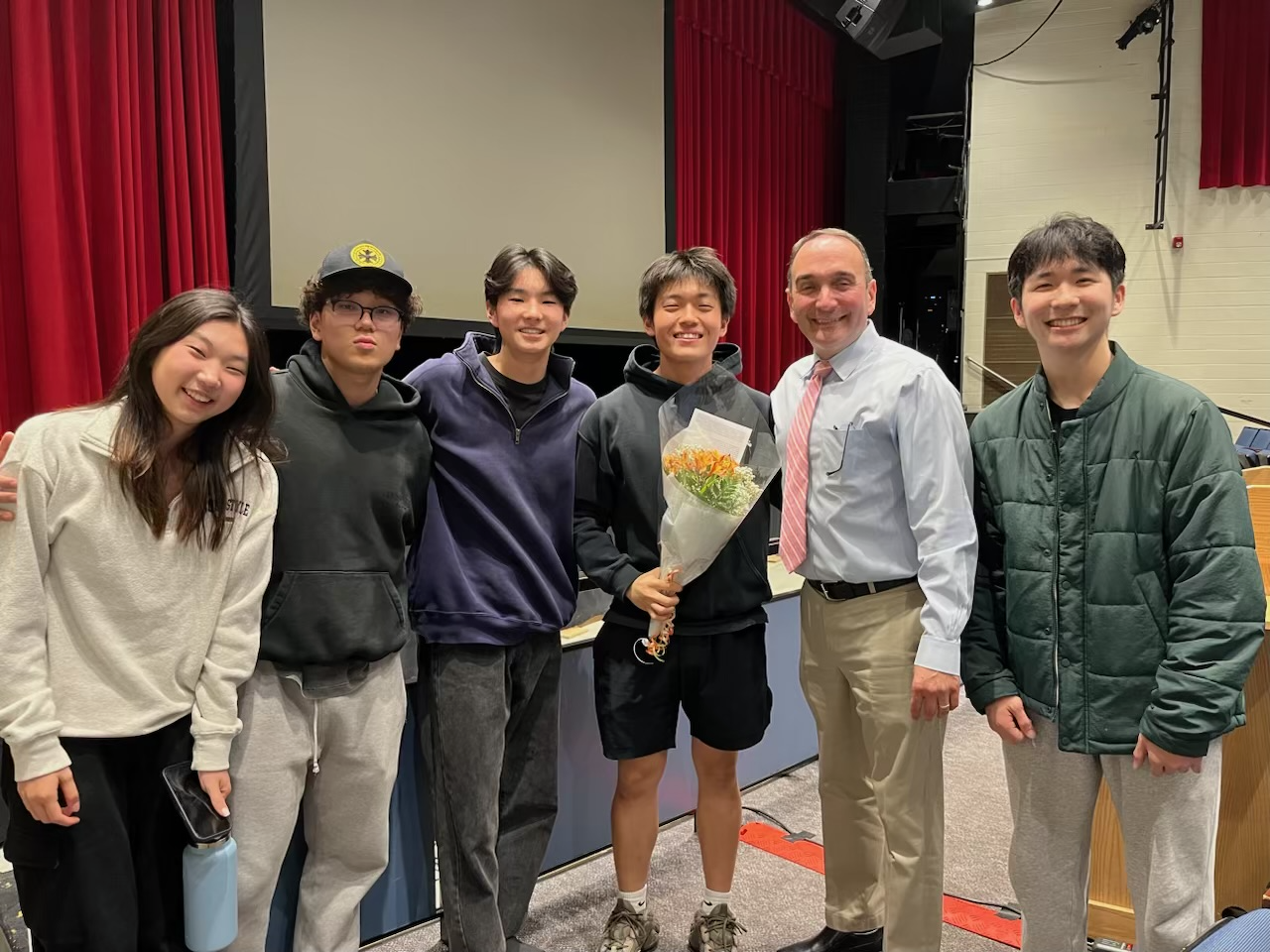
With the longest film of the program at 17 minutes and 40 seconds, Andrew Kim, director and writer of the film, Loving Rue, shares a much different experience creating the piece than the rest of the class. Being heavily involved in art already, Kim once was into mediums such as painting, but has since “shifted [his] art medium towards photography and film.” This was not the first time Kim put on a film, as he has directed two films prior to Loving Rue, staying consistent with his style of emotional and thought-provoking content.
Kim says that “there are complex concepts, profound meanings, symbolism, and a deep story with every art piece” that he creates. Featuring a total cast of 4 individuals, Kim decided to use various locations and spent weeks constructing the film. His inspiration for the film came from within himself. Kim says “the film was based on my personal experiences so it took a lot of mental strength and willpower to pull off.” He even recalls having to “go back in the past and face my painful memories to create this film.” Though feeling hesitant about using his own life experiences and emotions to create the film, Kim says “Through making this movie, I managed to love myself.”
Heewon Kiim, main character of Loving Rue, says that he “learned a lot of experience from being a part of this film.” Getting to see the more vulnerable side of Kim through the production, Kiim also says “I got to see Andrew’s perspective on what captivated him to make this move and it brought us spiritually more together.” Reflecting on the aftermath of the screening of the film, Kim says “I hope the viewers learn that love is amazing, love is so beautiful, but then at the same time, love is painful, and love can be harmful. So learn, learn about love, experience it, but never forget to love yourself.


